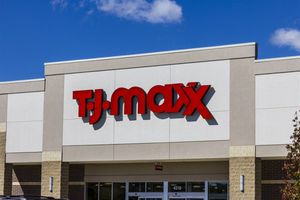The "Saudi Arabia Osteoporosis Drugs Market to Reach US$ 308.84 Million by 2033 - 4.33% CAGR Driven by Biologics and Aging Population" report has been added to ResearchAndMarkets.com's offering.
The Saudi Arabia Osteoporosis Drugs Market is expected to reach US$ 308.84 million by 2033 from US$ 210.89 million in 2024, with a CAGR of 4.33% from 2025 to 2033.
Due to improved healthcare infrastructure, the Saudi Arabian market for osteoporosis medications is concentrated in urban areas like Riyadh, Jeddah, and Dammam, whereas rural areas have less access to experts, diagnostics, and treatment alternatives.
Growing rates of osteoporosis, the quick uptake of biologics, and advantageous healthcare laws in a number of Saudi Arabian nations are the main causes of this expansion. While bisphosphonates continue to dominate in volume due to their cost effectiveness, the biologics segment is anticipated to grow at the quickest rate.
Government programs under Vision 2030, which prioritize regional medication production and improved healthcare infrastructure, promote the pharmaceutical industry. Osteoporosis treatments are becoming more accessible and reasonably priced as a result of these initiatives, and both name brand and generic medications are essential in satisfying the rising demand.
Bisphosphonates, calcitonin, parathyroid hormone analogs, selective estrogen receptor modulators (SERMs), and monoclonal antibodies are among the available treatments. Newer biologic medicines are steadily gaining traction because of their increased efficacy and better patient outcomes, even if bisphosphonates are still frequently administered. Despite progress, issues like poor drug adherence, low awareness in rural regions, and underdiagnosis still exist.
Additionally, comprehensive nationwide screening programs and coordinated post fracture care are lacking. Reducing the long term economic cost of osteoporosis in the nation and improving treatment outcomes could be achieved by addressing these challenges through integrated care models, digital health technologies, and education.
Key Factors Driving the Saudi Arabia Osteoporosis Drugs Market Growth
Saudi Arabia's Aging Population Is Growing
Because osteoporosis and aging are closely related, Saudi Arabia's aging population is a major factor driving up demand for osteoporosis medications. People are more susceptible to fractures, loss of bone density, and associated problems as they get older, especially those over 60. The need for long term therapeutic treatments as well as preventive measures is growing as a result of this demographic shift.
More people are reaching the age range where osteoporosis becomes a major concern due to better healthcare and longer life expectancies. As a result, the incidence of osteoporosis is rising in areas with greater populations of elderly persons. In order to assist the aging population and lessen the health burden associated with fractures, this development emphasizes the urgent need for efficient drugs and healthcare measures.
Higher Rates of Screening and Diagnosis
Early osteoporosis identification has increased throughout Saudi Arabia thanks to the availability of sophisticated diagnostic technologies including dual energy X ray absorptiometry (DEXA) and bone mineral density (BMD) scanning. These technologies are now widely used in hospitals and clinics, increasing screening accessibility for high risk populations, especially postmenopausal women. In order to encourage early testing and diagnosis, health authorities are aggressively promoting awareness and screening initiatives.
Because of this, more people are being diagnosed with bone loss early on, when treatment can be most successful. The number of patients eligible for osteoporosis treatments has increased dramatically due to the increase in early detection, which has increased demand for pharmacological interventions and made it possible to control the condition more effectively over the long term.
Government Initiated Medical Programs
As a national health issue, osteoporosis is being actively addressed by the Saudi Arabian government. It seeks to lower the frequency of fractures and enhance bone health outcomes through education programs, public health campaigns, and preventative measures. Osteoporosis screening and bone density monitoring are becoming more commonplace in national health programs, and access to therapies is being facilitated by drug reimbursement policies and subsidized treatment options.
These programs are promoting earlier medical intervention and increasing treatment adherence. Additionally, by making strategic investments in public health, the government's Vision 2030 push for local pharmaceutical development and a larger healthcare infrastructure is bolstering the availability of osteoporosis medications and promoting long term market growth.
Challenges in the Saudi Arabia Osteoporosis Drugs Market
Low Persistence and Adherence to Treatment
Low patient adherence and persistence with prescribed medication regimens is one of the main issues facing Saudi Arabia's osteoporosis management. A lack of immediate, apparent benefits, worries about long term health repercussions, or worries about adverse effects cause many patients to stop treatment too soon. Non-adherence is also influenced by cultural norms and a lack of knowledge about how osteoporosis progresses.
Treatment results are harmed as a result, raising the risk of fractures and associated problems. Long term patient involvement is challenging for healthcare practitioners, particularly when patients need daily or weekly oral medication. Enhancing patient education, providing alternate dosage regimens, and incorporating follow up assistance may all contribute to increased adherence and improved population wide therapeutic efficacy.
Poor Treatment Persistence and Adherence
Poor patient perseverance and adherence to prescribed treatment regimens is one of the main issues facing osteoporosis care in Saudi Arabia. Due to worries about side effects, worries about long term health repercussions, or a lack of obvious, immediate advantages, many patients stop treatment too soon. Non-adherence is further exacerbated by cultural attitudes and a lack of knowledge regarding the progressive nature of osteoporosis.
Treatment results suffer as a result, and the risk of fractures and associated complications rises. It can be challenging for healthcare professionals to stay in touch with patients over the long term, particularly when they need daily or weekly oral medication. Enhancing follow up assistance, providing alternate dose schedules, and improving patient education may all contribute to increased adherence and improved therapeutic efficacy for the general public.
Company Analysis: Overview, Key Persons, Recent Developments, SWOT Analysis, Revenue Analysis
- Amgen Inc.
- Eli Lilly and Company
- F. Hoffmann La Roche AG
- GlaxoSmithKline Plc
- Merck & Co. Inc.
- Novartis AG
- Pfizer Inc.
- Teva Pharmaceutical Industries Ltd.
- UCB S.A.
Key Attributes:
| Report Attribute | Details |
| No. of Pages | 200 |
| Forecast Period | 2024 - 2033 |
| Estimated Market Value (USD) in 2024 | $210.89 Million |
| Forecasted Market Value (USD) by 2033 | $308.84 Million |
| Compound Annual Growth Rate | 4.3% |
| Regions Covered | Saudi Arabia |
Key Topics Covered:
1. Introduction
2. Research & Methodology
2.1 Data Source
2.1.1 Primary Sources
2.1.2 Secondary Sources
2.2 Research Approach
2.2.1 Top-Down Approach
2.2.2 Bottom-Up Approach
2.3 Forecast Projection Methodology
3. Executive Summary
4. Market Dynamics
4.1 Growth Drivers
4.2 Challenges
5. Saudi Arabia Osteoporosis Drugs Market
5.1 Historical Market Trends
5.2 Market Forecast
6. Market Share Analysis
6.1 By Product Type
6.2 By Route of Administration
6.3 By States
7. Product Type
7.1 Bisphosphonates
7.2 Calcitonin
7.3 Rank Ligand Inhibitor
7.4 Parathyroid Hormone Therapy (PTH)
7.5 Selective Estrogen Receptor Modulators (SERMs)
7.6 Sclerostin Inhibitor
7.7 Others
8. Route of Administration
8.1 Oral
8.2 Injectable
8.3 Others
9. Top States
9.1 Dhahran
9.2 Riyadh
9.3 Khobar
9.4 Jeddah
9.5 Dammam
9.6 Others
10. Value Chain Analysis
11. Porter's Five Forces Analysis
11.1 Bargaining Power of Buyers
11.2 Bargaining Power of Suppliers
11.3 Degree of Competition
11.4 Threat of New Entrants
11.5 Threat of Substitutes
12. SWOT Analysis
12.1 Strength
12.2 Weakness
12.3 Opportunity
12.4 Threats
13. Pricing Benchmark Analysis
13.1 Amgen Inc.
13.2 Eli Lilly and Company
13.3 F. Hoffmann-La Roche AG
13.4 GlaxoSmithKline Plc
13.5 Merck & Co. Inc.
13.6 Novartis AG
13.7 Pfizer Inc.
13.8 Teva Pharmaceutical Industries Ltd.
13.9 UCB S.A.
14. Key Players Analysis
For more information about this report visit https://www.researchandmarkets.com/r/3ebazn
About ResearchAndMarkets.com
ResearchAndMarkets.com is the world's leading source for international market research reports and market data. We provide you with the latest data on international and regional markets, key industries, the top companies, new products and the latest trends.
View source version on businesswire.com: https://www.businesswire.com/news/home/20250822009107/en/
Contacts
ResearchAndMarkets.com
Laura Wood, Senior Press Manager
press@researchandmarkets.com
For E.S.T Office Hours Call 1-917-300-0470
For U.S./ CAN Toll Free Call 1-800-526-8630
For GMT Office Hours Call +353-1-416-8900


















